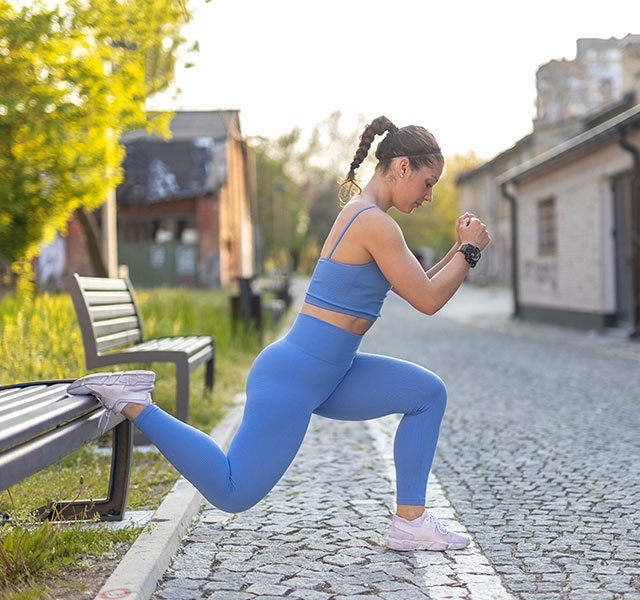Everyone’s looking to get the most out of their exercise routine. You want to see results quickly, but you need a workout that can fit into your busy schedule. And that’s where compound exercises come in.
“Compound movements are a lot more efficient and effective,” says Jennifer Burnham, MS, a performance athletic trainer at Henry Ford Health.
What Are Compound Exercises?
Just like it sounds, a compound exercise involves a combination of muscle groups. By contrast, an isolated or targeted exercise works just one muscle group. For example, when you do a squat, you engage your quadriceps, glutes, hamstrings, hip flexors and core muscles. But when you lie down and use the hamstring curl machine at the gym, you use just that one muscle group.
What Are the Benefits Of Compound Exercises?
If you want to streamline your strength training workout and hit all your major muscle groups in less time, compound exercises are the way to go. “It takes a lot more time to work your way through each individual muscle group one at a time than it does to do compound moves,” says Burnham. “You’ll also burn more calories because you’re using more muscle groups at the same time.”
The other main advantage of compound exercises is that they tend to be more functional. “Functional movements mimic movements you do in real life,” says Burnham. “A squat, for example, mimics the movements you need to do to get up out of a chair or pick something up from the ground.” Building strength by doing compound exercises allows you to function better and more safely in your daily activities.
The Best Compound Exercises To Try
Before you start a workout routine that includes compound exercises, you may want to consult with a trainer or other fitness professional. “Because you’re using more muscle groups at once, it’s even more important to do the moves correctly so you don’t develop any muscle imbalances or injuries,” says Burnham.
For these five compound moves, Burnham suggests starting with light weights and doing two sets of 10 repetitions. As you gain strength, you can gradually increase your weights or the number of repetitions to keep the moves challenging.
Squat
Muscles worked: quadriceps, glutes, hamstrings, hip flexors, core
How to do it: Stand with feet hip width apart. Keeping your back straight and your weight in your heels, push your hips back as you bend your knees. Go as low as you can while maintaining good form (but no lower than with your thighs parallel to the ground). Slowly stand back up.
Deadlift
Muscles worked: hamstrings, glutes, hip flexors, core
How to do it: Stand with feet hip width apart, arms down at your sides, holding a dumbbell in each hand. Keeping your knees slightly bent and your back flat, push your hips back and slowly lower down until the dumbbells are just below your knees. Slowly pull yourself back up, engaging your hamstrings and pushing your hips forward as you return to standing.
Pull-up
Muscles worked: shoulders, back, biceps, core
How to do it: Grip a bar with your hands slightly wider than shoulder width. Palms can face in (easier) or out (more difficult). Slowly pull your chin up above the bar and lower back down. You can do assisted versions by using an elastic sling attached to the bar to support some of your body weight. Or you can lie in a reverse plank position under a barbell that’s sitting on a squat rack. Keep your core muscles tight as you pull your body upward and lower it back down, feet remaining on the floor.
Bench press
Muscles worked: chest, shoulders, triceps
How to do it: Lie flat on a bench with feet either flat on the ground or flat on the bench. Hold a barbell with both hands, shoulder-width apart at your chest (or use dumbbells). Keeping your back flat, slowly lift the bar or weights until your arms are straight then lower back down to your chest.
Lunge with rotation
Muscles worked: quadriceps, glutes, hamstrings, core
How to do it: Hold a weighted medicine ball with both hands at chest level. Step forward with your right foot, lowering into a lunge. Rotate your upper body to the right, then back to center as you bring your left foot forward and stand back up. Repeat on the left side.
To find a doctor or sports medicine specialist at Henry Ford, visit henryford.com or call 1-800-436-7936.
Jennifer Burnham is an athletic trainer who sees patients at the Henry Ford Center for Athletic Medicine in Detroit.



